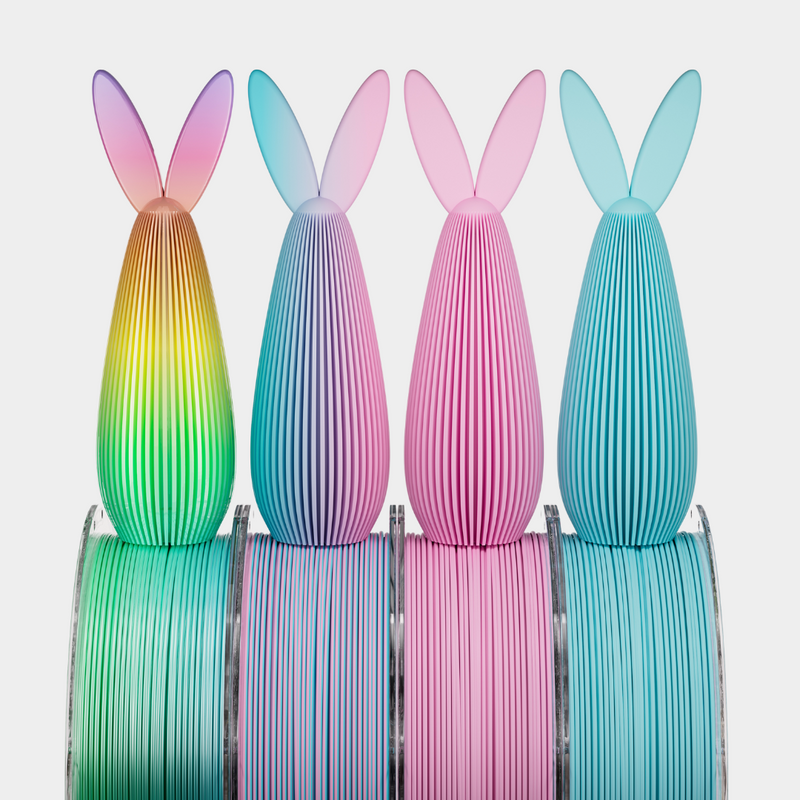Unlock the Secrets: Transform Your Creations with the Perfect 3D Printer Filament!
Choosing the right 3D printer filament is crucial for anyone looking to achieve successful and high-quality prints. Whether you're a beginner eager to explore the world of 3D printing or an experienced user refining your craft, the filament you select can significantly influence the outcome of your creations. The right filament not only enhances the aesthetics of your prints but also affects their durability and functionality. With numerous types of filaments available—ranging from biodegradable PLA to robust ABS—understanding your options is essential. In this article, we will delve into the various types of 3D printer filaments, factors to consider when purchasing online, and tips for ensuring your filaments remain in top condition.

Understanding 3D Printer Filaments
3D printer filaments are the materials used in 3D printing, serving as the 'ink' that brings your digital models to life. These filaments come in various materials, each with distinct properties that can impact the quality and characteristics of the final print. The most common filament materials include PLA, ABS, PETG, and TPU, among others. Each type of filament has unique melting points, flexibility levels, and adhesion properties, which can affect how well a print adheres to the build plate and how layer bonding occurs during the printing process. Understanding these basics is essential for optimizing your printing outcomes and achieving the desired results with your 3D projects.
Types of 3D Printer Filaments
There are several types of 3D printer filaments, each designed for specific applications and offering unique benefits. PLA (Polylactic Acid) is one of the most popular filaments, known for its ease of use, low warping, and biodegradable properties, making it ideal for beginners and general-purpose printing. ABS (Acrylonitrile Butadiene Styrene) is favored for its strength and durability, often used in functional parts but requiring more precise temperature control during printing. PETG (Polyethylene Terephthalate Glycol) combines the best features of both PLA and ABS, offering strength, flexibility, and ease of printing. TPU (Thermoplastic Polyurethane) is a flexible filament perfect for creating rubber-like parts. Each filament type has its advantages and is suited for different use cases, from prototyping to producing detailed models.
Factors to Consider When Buying Filaments Online
When purchasing 3D printer filaments online, several key factors should be taken into account. First, consider the material type; choose a filament that suits your project requirements, whether you need flexibility, strength, or ease of printing. Next, check the filament diameter, typically 1.75mm or 2.85mm, ensuring compatibility with your 3D printer. Color options can also be significant, especially for aesthetic projects, as different colors can enhance the visual appeal of your prints. Additionally, always read reviews from other users to gauge the quality and reliability of the filament, and carefully examine product specifications to avoid issues with printing. Understanding these factors can help you make informed decisions and avoid common pitfalls.
Where to Buy 3D Printer Filaments Online
There are numerous online platforms where you can purchase 3D printer filaments, each offering a wide variety of options. Shopping online provides the convenience of browsing extensive inventories, often at competitive prices. However, it's crucial to choose reliable sellers to ensure the quality of the filaments you receive. While online shopping can be convenient, be wary of potential pitfalls such as inconsistent quality or shipping delays. Look for platforms with good customer reviews and transparent return policies. Some friends have shared their experiences of ordering from lesser-known sites only to receive filaments that did not meet their expectations. Therefore, always do your research and opt for reputable sellers to ensure a satisfactory shopping experience.
Tips for Storing and Maintaining Filaments
Proper storage and maintenance of your 3D printer filaments are essential for maximizing their lifespan and performance. Filaments should be stored in a cool, dry place, away from direct sunlight, as UV exposure can degrade the material. Humidity is another critical factor; excessive moisture can lead to filament degradation and poor print quality. Consider using airtight containers or vacuum-sealed bags to protect your filaments from humidity. Some friends have shared their simple yet effective storage solutions, such as using silica gel packets to absorb moisture. Regularly checking your filaments for signs of wear or degradation before use can also help ensure optimal printing results.
Maximizing Your 3D Printing Experience
In conclusion, selecting the right 3D printer filament is a fundamental aspect of enhancing your 3D printing experience. By understanding the different types of filaments available and considering key purchasing factors, you can make informed decisions that lead to successful prints. Don't hesitate to explore and experiment with various filaments to discover what works best for your projects. With the right filament in hand, your creative possibilities are virtually endless—so dive in and transform your ideas into reality!








